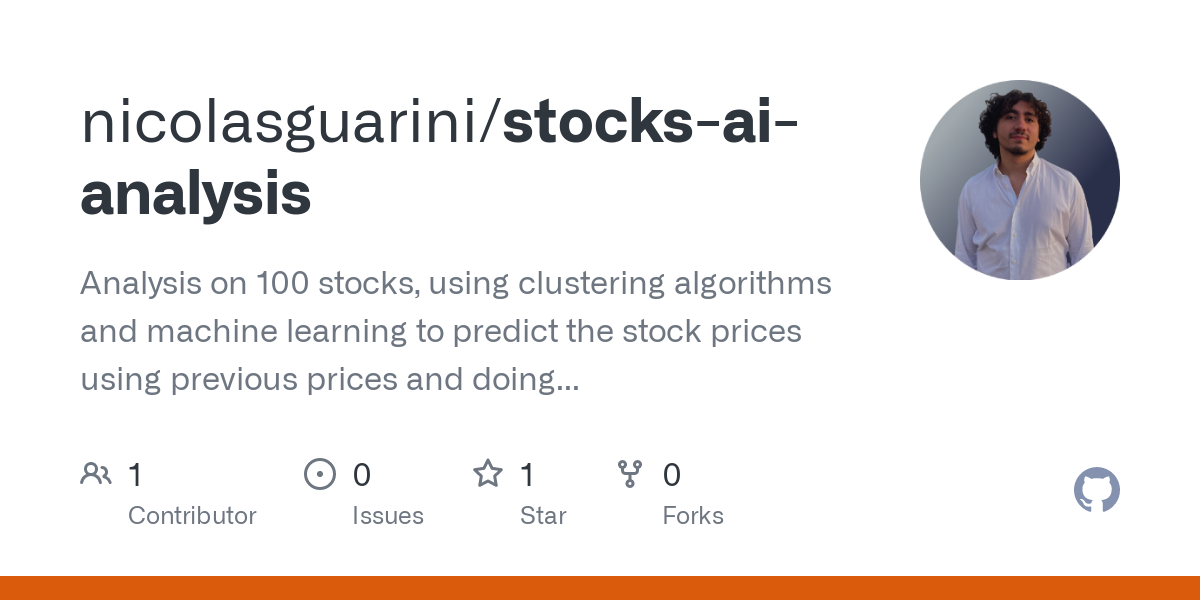20 Excellent Ways For Picking Best Ai Penny Stocks
Top 10 Tips On Backtesting Stock Trading Using Ai From Penny Stocks To copyright
Backtesting is essential for enhancing AI trading strategies, specifically in volatile markets like the market for copyright and penny stocks. Here are 10 important strategies to get the most out of backtesting
1. Understanding the reason behind backtesting
Tip – Recognize the importance of testing back to evaluate a strategy’s performance using historical data.
This is because it ensures that your strategy is viable prior to taking on real risk in live markets.
2. Use historical data of high Quality
Tips – Ensure that the historical data is correct and complete. This includes volume, prices and other relevant metrics.
In the case of penny stocks: Include information on splits, delistings and corporate actions.
Utilize market events, for instance forks or halvings, to determine the value of copyright.
Why? High-quality data produces real-world results.
3. Simulate Realistic Trading Conditions
Tip. When you backtest make sure to include slippages as with transaction costs and bid-ask splits.
Why: Neglecting these elements can result in unrealistic performance outcomes.
4. Test Market Conditions in Multiple Ways
Re-test your strategy with different market scenarios, including bullish, bearish and trending in the opposite direction.
Why? Strategies can perform differently depending on the conditions.
5. Concentrate on the most important metrics
Tips: Examine metrics, for example
Win Rate: Percentage of profitable trades.
Maximum Drawdown: Largest portfolio loss during backtesting.
Sharpe Ratio: Risk-adjusted return.
What are they? They help determine the strategy’s risk and reward potential.
6. Avoid Overfitting
Tip. Be sure that you’re not optimizing your strategy to be in line with the historical data.
Testing using data that was not used to optimize.
Instead of complicated models, consider using simple, robust rule sets.
Why? Overfitting can cause unsatisfactory performance in real-world situations.
7. Include Transaction Latencies
Tips: Use time delay simulation to simulate the time between signal generation for trades and execution.
For copyright: Take into account the exchange latency and network latency.
Why? The impact of latency on entry and exit is the most evident in industries that are fast-moving.
8. Do Walk-Forward Tests
Tip: Divide data into multiple time periods.
Training Period: Improve the plan.
Testing Period: Evaluate performance.
This technique proves the fact that the strategy can be adapted to different periods.
9. Forward testing is a combination of forward testing and backtesting.
Tip: Use techniques that have been tested in the past for a demo or simulated live-action.
What’s the reason? It allows you to check whether your strategy is operating as expected, given the current market conditions.
10. Document and then Iterate
Tip: Keep detailed records of backtesting assumptions, parameters, and results.
Why: Documentation can help refine strategies over time and identify patterns.
Bonus: Backtesting Tools Are Efficient
Backtesting is much easier and automated with QuantConnect Backtrader MetaTrader.
The reason is that advanced tools make the process, and help reduce mistakes made by hand.
You can improve the AI-based strategies you employ so that they work on copyright markets or penny stocks using these guidelines. See the recommended linked here about ai stock market for more recommendations including ai for copyright trading, ai stock predictions, ai stock picker, incite, ai stock picker, ai penny stocks to buy, best ai for stock trading, trading bots for stocks, ai investing platform, ai trading and more.

Top 10 Tips To Monitor Market Sentiment Using Ai For Prediction, Stock Pickers And Investments
Monitoring the market sentiment is vital for AI-powered predictions as well as investments and stock selection. Market sentiment can have a major influence on the price of stocks and market developments. AI-powered tools are able to analyze huge quantities of data to discover signals of sentiment from a variety of sources. Here are ten suggestions to assist you in using AI in stock-picking:
1. Natural Language Processing for Sentiment Analysis
Tips: Make use of Artificial Intelligence-driven Natural Language Processing (NLP) techniques to analyze the text in news articles and financial blogs, earnings reports as well as social media sites (e.g., Twitter, Reddit) to determine the sentiment.
The reason: NLP allows AI to identify and comprehend emotions, opinions and market sentiments that are expressed in unstructured text. This allows for instantaneous analysis of sentiment which can be used to inform trading decisions.
2. Monitor Social Media for Sentiment Indicators
Tips Setup AI algorithms to scrape real-time information from social media, news platforms forums, and other sites to monitor sentiment shifts in relation to stocks or events.
Why: Social media and news often influence market movements quickly, particularly for risky assets such as penny stocks and cryptocurrencies. Emotion analysis in real time can provide actionable insights to short-term trade decisions.
3. Integrate Machine Learning to Predict Sentiment
Tip : You can use machine learning algorithms to predict the future direction of market sentiment by using historic data, sentiment signals, and price fluctuations (e.g. connected to news or social media).
Why: AI is able to forecast price changes based on patterns of sentiment data. It also can predict the historical performance of stocks.
4. Combine Sentiment Data and Fundamental and Technical Data
Tips: To develop an effective investment strategy, combine sentiment analysis with technical indicators such as moving averages, RSI and fundamental metrics like earnings reports, P/E or earnings ratios.
The reason is that sentiment is an additional layer of data that can be used to complement fundamental and technical analysis. Combining all these variables enhances AI’s ability to make informed and well-balanced predictions.
5. Watch for changes in sentiment during Earnings Reports as well as Major Events and Other Important Events
Tips: Make use of AI to observe changes in sentiment before and after key events such as earnings reports, launches of products, or even regulatory announcements, as they can significantly influence stock prices.
What’s the reason? These events are usually the triggers for major changes in market sentiment. AI can identify changes in sentiment quickly, providing investors insight into stock movements which could trigger by these triggers.
6. Use Sentiment Arrays as a way to Identify Current Market Trends
Tip: Cluster sentiment data to identify broad market trends, sectors or stocks that have an optimistic or negative outlook.
The reason: Sentiment grouping enables AIs to detect emerging trends that are not evident from individual stocks and small data sets. This allows them to identify areas or industries that are subject to shifting interest of investors.
7. Use Sentiment Scores to determine Stock Evaluation
Tip: Develop sentiment scores by analyzing forum posts, news articles as well as social media. Use these score to sort stocks and filter them based upon positive or adverse sentiment.
What is the reason: Sentiment score offers an objective measure of the mood of the market toward the stock. This allows better decision-making. AI can improve these scores over time, which can enhance predictive accuracy.
8. Monitor Investor Sentiment across a variety of Platforms
TIP: Observe the sentiments across various platforms (Twitter and financial news sites, Reddit etc.). Compare sentiments between various sources to get a better overall view.
Why: The sentiment on a particular platform may be incomplete or skewed. The monitoring of sentiment across different platforms provides a complete and reliable information about the attitudes of investors.
9. Detect Sudden Sentiment Shifts Using AI Alerts
Create AI alerts that notify you of significant shifts in the sentiment toward a specific sector or stock.
Why: Sudden sentiment changes such as a huge increase in negative or positive mentions, may precede rapid price changes. AI alerts can help investors take action quickly before the market’s values change.
10. Examine trends in long-term sentiment
Tip : Use AI in order to analyze longer-term trends in sentiments for companies, stocks and the market in general.
What is the reason? Long-term sentiment patterns can aid in identifying companies with strong potential for growth or indicators of emerging dangers. This broader view complements short term sentiment signals and may help to guide long-term investments strategies.
Bonus: Combine Economic Indicators with Sentiment
TIP Use the combination of sentiment analysis and macroeconomic data, such as GDP or inflation statistics will help you to know how the general economic situation affects mood.
The reason is that economic conditions generally can have an impact on the mood of investors, and, consequently, stock prices. Through the linking of sentiment with economic indicators, AI can provide deeper insights into market fluctuations.
These tips will help investors utilize AI effectively to monitor and interpret the market’s mood. They will then be able to make more informed stock selections or investment predictions and take better decisions. Sentiment analysis adds a real-time, unique layer of insight to traditional analysis. This aids AI stock analysts navigate complex market conditions more accurately. Check out the best get the facts about ai trading bot for more examples including copyright predictions, best ai stocks, ai copyright trading bot, best stock analysis website, trading chart ai, best copyright prediction site, trading bots for stocks, ai trading app, best ai stock trading bot free, incite and more.
